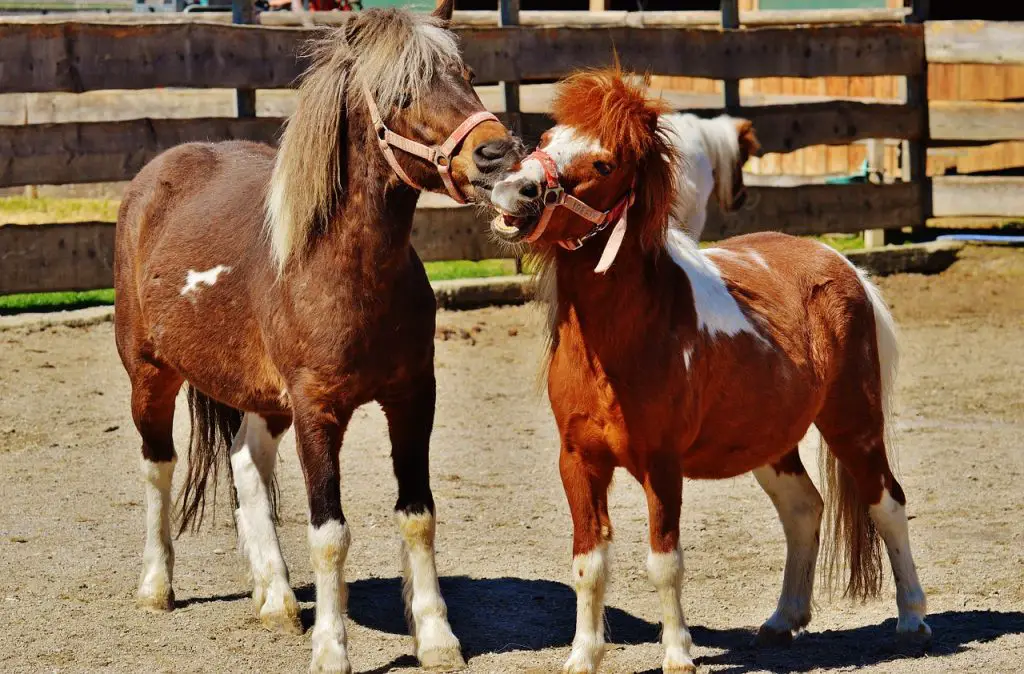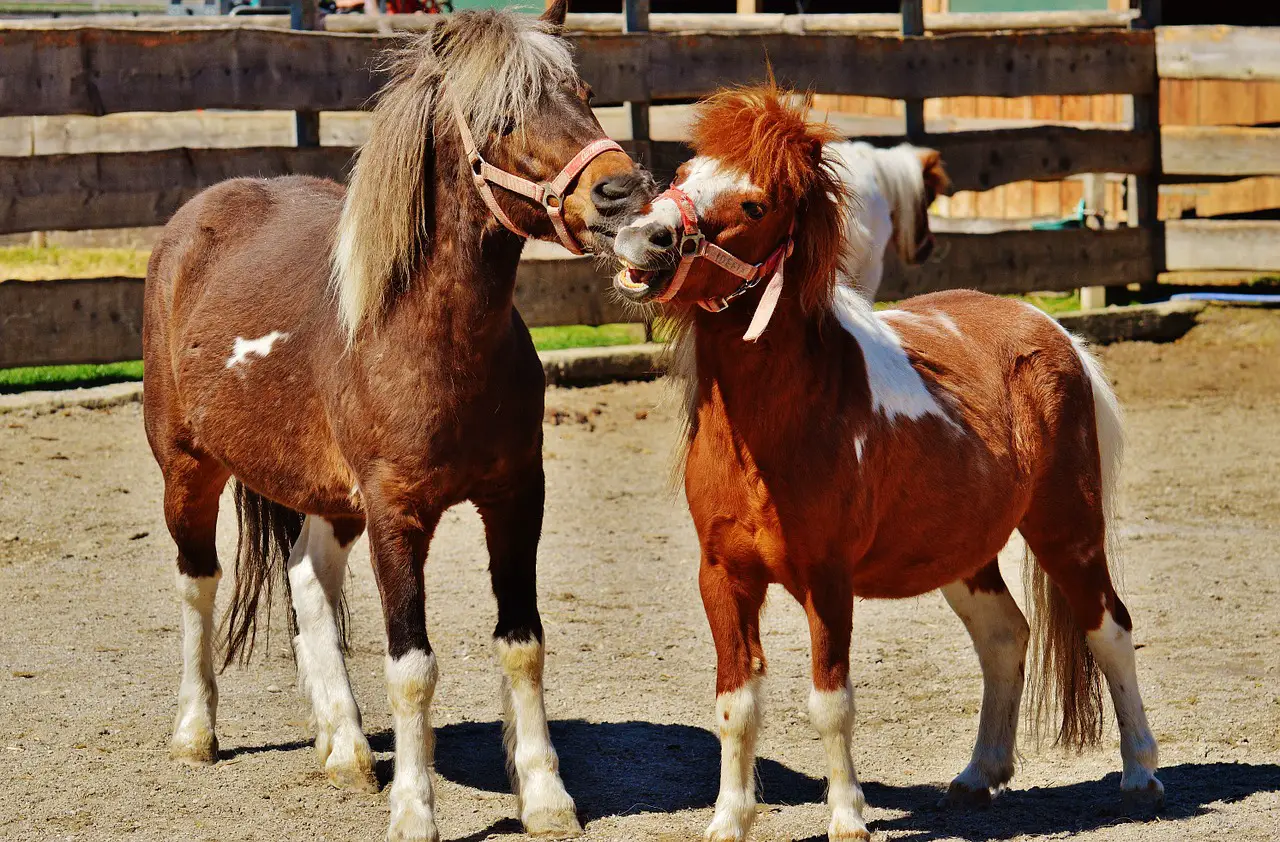Last Updated on February 23, 2022 by Allison Price
It is fascinating to see that horses share many common traits, even though they may have been raised differently or have different uses. Although horses are unique individuals, the same physical and behavioral characteristics can be applied to all horses.
Horses are unique and fascinating because of many characteristics, including their physical traits such as large eyes, hoofs and small stomachs. Horses can also be very predictable, such as bolting when they sense danger and grazing all day.
Horses are known for their many unique characteristics. They can’t vomit even if they want to, and they can stand up while sleeping. Continue reading to find out more about horse characteristics.
The following topics are covered:
- Horses have some unique characteristics
- Horses’ physical characteristics
- Horse behavior and human characteristics
- Horse facts and interesting facts
Six unique horse characteristics
Knowing the personality and traits of a horse can help you build a strong relationship with it. This knowledge can also be very helpful during training, as it will help you understand how your horse thinks.
These are the top characteristics of a horse.
1. Prey animals
Horses are prey animals and are always looking for potential dangers. Horses are often easily scared by objects we don’t see as dangerous.
You, as a rider, must train your horse to not be afraid of these noises and to desensitize it to them. This will prevent it from running away if something is happening nearby.
2. Ever alert
Horses are always alert and sensitive to their surroundings. Your horse will constantly be alert and sensitive to its surroundings.
These subtle movements, such as swishing tails and ear positions, are also used by horses to communicate over long distances.
You may have heard the term HorseSense. It refers to the fact the horse is acutely aware of the dangers around him. This is what allows horses to stay safe and avoid dangers.
3. Habituating creatures
It is a good idea to train, groom, and feed your horse every morning at the same time each day. Horses are creatures of habit and anticipate what will happen throughout the day.
4. Herd animals
Horses are social animals and rely on their herd to provide protection and companionship. Like any other group, horses have a “pecking orchard” and each horse has a role. These roles help keep members safe and organized.
The mare and lead stallion watch over the horses while also keeping an eye on potential predators like coyotes, mountain lions, or wolves. Other horses are sentries, tend to newborns, and provide grazing for the herd.
Also read: Horse training: How to establish your role as a herd leader
5. Sensitive creatures
Horses can form deep, loving relationships with people because they are sensitive and emotionally connected. Horses love being around other horses, whether they are grazing together or just enjoying their human companions.
6. Herbivores
Horses are herbivores. This means that they consume forages (hay and grass) in order to keep their strength and fulfill their nutritional requirements. Horses who work hard may require a diet that includes grains in order to get more energy.
You can find my Horse Hay Guide: Which Type is Best.
Horses’ physical characteristics
Horses are part of the equine breed. They are the descendants of Equus. These are their most important physical characteristics:
- Body A horse with long legs, strong muscles, and a strong topline has a . These characteristics allow horses to run fast and lift heavy loads.
- Teeth Horses have strong jaws and teeth. Their jaw strength allows them to cut and chew thick grasses and hay. See my guide on Horse teeth: What Kinds.
- Eyes The positioning of the eyes on each side of your horse’s head allows them to see in multiple directions simultaneously. This accounts for their ability see 350-degrees. Blue-eyed horses exist in a few breeds, but they are not common.
- Legs– Horses’ lower legs are free of fat. This is why they can run faster than other animals, and also helps them avoid predators.
- Heart – Horses are strong and can run miles. Some endurance races can go as far as twenty miles, while others may go even farther.
- Hoof – A hoof is a single toe that has been covered with a hard layer of horn. They average about one quarter inch per month. This article will reveal surprising facts about horseshoeing, and whether or not it is cruel.
- Horses come with a wide range of colors and markings Common colors for horses include black, bay, grey and skewbald. There are beautiful patterns available for horse breeds such as the American Paint Horse.
Three behavior traits horses display
Knowing the behavior traits of horses will help you care for your animals better by learning how to feed them properly and getting the right amount of exercise.
1. Horses are often seen grazing during the day.
Horses have existed for approximately 25 million years. They have found a way of living in areas with low quality food. While living in the Eurasian Steppe, horses developed the incredible ability to extract nutrients from low-quality forages.
It is not because your horse is lazy that he grazes all day, but out of necessity. Horses graze for most of the day and their eating habits involve slow, steady movements. Moving and eating serve two purposes: exercise and food intake.

Horses kept in stalls need to be “turned out” every day in order to stay healthy. Horses are naturally sensitive to temperature fluctuations, but horses can also experience extreme fluctuations on the plains.
Horses can adapt well to extreme temperatures. However, individual needs may change depending on age, activity level and overall health.
While younger horses may not require protection during the night or when it is cold out, older horses will need a blanket to keep them warm in colder temperatures.
2. Horses communicate with their bodies through body language.
Horses have their own language, which humans must be able understand to train them well. This includes vocal communication as well as body movements, including neighing and head positioning. It also includes pinning ears when you are angry.
Horses are social animals that have a deep understanding of one another’s emotions. This is why they communicate with each other.
3. Horses must move.
Horses need to move in order for their organs to work correctly. Horses move nearly every day in the wild. They are either looking for food, grazing or walking to water sources.
Horses must walk for many reasons. Horses use the hoof as a pump to return blood to their hearts.
To maintain your horse’s health, you should allow them to move as much as possible. You should take your horse out of a stall every day to encourage movement and exercise.
Horses display four human traits – Your horse is more human that you think.
Horse characteristics that are human
These are some commonalities between horses and people:
1. Horses can feel the same emotions as humans.
Horses can pick up on the mood of their human handlers in a very precise way. Horses can instantly tell when their rider is stressed or unhappy. This is summarized beautifully by Buck Brannaman
Sometimes, the Horse is a Mirror of Your Soul.
Horses can also reflect your emotions, and sometimes, even reveal aspects of your personality you didn’t know existed.
2. Horses and people are very similar in physical appearance.
Although it may sound absurd to think horses and humans share similar characteristics, there are some similarities between them. Horses have a more complex bone structure than horses, but the number of bones that humans and horses have are very similar: horses have 205 bones while humans have 206.
Subscribe to Horse Racing Sense
Receive updates from Horse Racing Sense directly to your inbox.SUBSCRIBE By subscribing, I consent to receiving emails.
Both mammals have a single stomach and a pelvis, but horses can absorb cellulose fiber from grass while humans cannot.
3. Horses are intelligent
Horses can also be trained to do a variety of acts and athletics. My guide to Horse Intelligence explains how scientists assess horse intelligence and how horses distinguish between patterns.
4. Horses are good at remembering.
Horses have great memories, just like humans. Horses can forgive but not forget.
Ten Interesting Facts About Horses
1. Stiff upper lip, horses have a unique upper lip.
Horses have aprehensile upper lips. Prehensile refers to horses’ ability to use their lips for grasping hay or other objects.
2. Horses have an additional eyelid
A nictitating membrane, or third eyelid, is a protective layer that horses have. It is located in the inner corner of the eye, and it closes horizontally when the horse is grazing.
3.There are still wild horses
The Przewalski horses are the last wild horses. These horses are also known as Takhi, Asiatic Horses or Mongolian horses. These horses have 66 and domestic horses have 64 chromosomes.
4. Horses can have bizarre dietary habits
Horses may eat wood and dirt, which can sometimes be quite strange. Horse foals can also consume manure. Horses often eat a lot of sand when they graze. Psyllium Husk Fiber is what horses need to absorb and move the sand through their intestines.
5. Cloning a horse is possible.
Italian scientists tried to clone horses in 2003. The procedure is expensive and can be used by breeders to create duplicates of winning horses. Cloned horses are allowed to race.
6. Anyone know of any horse colleges?
Numerous universities offer degrees in equine studies at the Bachelor’s, Master’s and Doctorate levels. LSU has a great program for horse lovers. Students can bring their horses.
7. Horses that are carrying babies are called foals.
Horses foal, while dogs give birth to their offspring. Foaling takes anywhere from 30 minutes to an hour. Most foals are born either early in the morning, or late at night.
8. Farriers
A horse farrier is someone who takes care of horses’ feet and shoes them. From the Latin word ironworkers, the word “farrier” comes.
Farriers can be male or female. However, it is a strenuous job that can cause injury to your back and joints.
9. Horses possess a sixth sense.
Like humans, horses have five senses: taste, sight, hearing and touch. A sixth sense is also available to horses, which allows them to know their intent. They can sense fear, anger and joy as well as anxiety, stress, and relaxation.
10. Horses can live for a very long time.
Billy is believed to have been the oldest horse, and he lived to a ripe old age of just 62 years.
FAQ
According to the Chinese Zodiac, horses have certain characteristics
Each year in Chinese culture is associated with an animal that reflects the characteristics that were born that year. People born in the Year of Horse can be described as intelligent, independent, successful, ambitious, and able to help you realize your dreams.
These are three fascinating facts about horses
1. Horses are small in size . Their stomachs are the smallest among domesticated animals.
2. Horses are able to sleep standing. They have a locking mechanism in their legs that they engage to keep them up when they’re asleep.
3. Horses are taller than any other land mammal and have large eyes.
What are the most popular horse breeds?
Horses are more aggressive and mean when they are treated badly by other animals or humans. This is because their instinct is to flee from danger, not fight. The most resilient horse breeds, such as Thoroughbreds and Arabians, AkhalTekes and Barbs, are those that are hot-blooded.



